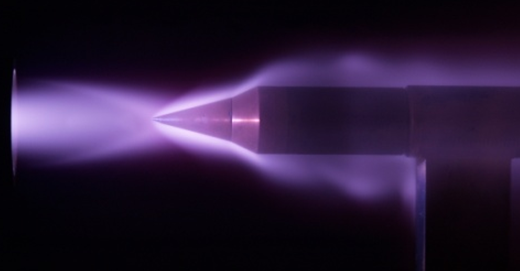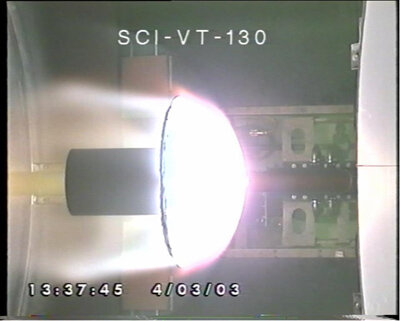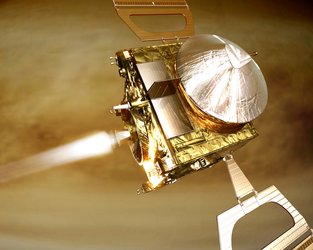Atmospheric entry workshop set for Switzerland
Shooting stars and spacecraft entering atmospheres have something in common: both are prone to glow. A workshop in Switzerland this October will gather together experts studying the radiance effects created by high-speed spacecraft plunging through planetary atmospheres.
The ‘Fourth International Workshop on Radiation of High Temperature Gases in Atmospheric Entry’ will be held at Ecole Polytechnique Fédérale de Lausanne (EPFL) in Lausanne, Switzerland, 12–15 October.
Space vehicles entering planetary atmospheres at high speeds have high kinetic energy, most of which is dissipated in the form of heat.
This conversion to thermal energy occurs in several ways: atmospheric gas crossing the shock wave ahead of the vehicle is heated by compression, while additional heat is generated by friction.

At very high speeds, the shock layer over the vehicle’s heatshield may be heated to such high temperatures that a significant amount of energy is released in the brilliant form of ‘radiant emission’.
“This radiative energy can be an important and, in some cases, predominant source of heat transfer in a spacecraft,” explained Lionel Marraffa, organising the workshop for ESA.
“A properly designed and validated thermal protection system is essential to keep the excessive heat formed in the shock layer from damaging the vehicle, its contents or even human crews.”

To improve their understanding of this phenomenon, important for crewed missions as well as planetary exploration, research groups model these radiation of high-temperature gases (RHTG) effects using computational fluid dynamics or simulate them with plasma wind tunnels or shock tubes.
The workshop aims to promote a dialogue between researchers on best practice in modelling, simulation and experimental techniques in this area.
A number of RHTG test cases – atmospheric entry models based on real or experimental scenarios – will be distributed to participants as a way of cross-checking the efficiency and accuracy of different methods employed.
The workshop will include keynote presentations by leading experts, and highlights of research and developments in this area.
Topics
The following topics are included in the workshop programme:
Scientific and technical papers on:
- non equilibrium chemical kinetics
- hypersonic flow
- plasma emission and absorption
- computation fluid dynamics
- experimental instrumentation techniques and facilities
- flight experiments
- radiation transferinvited papers on RHTG
test-cases, which are organized in three themes:
- radiation emission and transfer database, and models
- re-building of selected radiative emission and absorption ground or flight experiments
- numerical axially-symmetric test-cases for non-equilibrium flow and radiation emission and absorption calculations- preparation of future test-cases:
- identification of suitable experimental results, literature reference data ,and reviews of previous re-building activities.
The test case definitions will be issued soon.
For further information, please contact:
Lionel Marraffa
Email: Lionel.Marraffa@esa.int
Pierre Omaly
Email: Pierre.Omaly@cnes.fr





